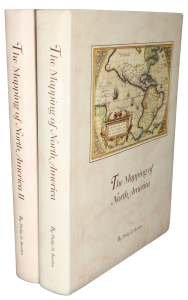Rare Maps and Prints
- World & Celestial
- North America
- West Indies, South & Central America
- British Isles
- British Isles
- English counties
- Large-scale
- Bedfordshire
- Berkshire
- Buckinghamshire
- Cambridgeshire
- Cheshire
- Cornwall
- Cumberland
- Derbyshire
- Devon
- Dorset
- Durham
- Essex
- Gloucestershire
- Hampshire
- Herefordshire
- Hertfordshire
- Huntingdonshire
- Islands
- Kent
- Lancashire
- Leicestershire
- Lincolnshire
- Middlesex
- Norfolk
- Northamptonshire
- Northumberland
- Nottinghamshire
- Oxfordshire
- Rutland
- Shropshire
- Somerset
- Staffordshire
- Suffolk
- Surrey
- Sussex
- Warwickshire
- Westmoreland
- Wiltshire
- Worcestershire
- Yorkshire
- Wales
- Scotland
- Ireland
- Western Europe
- Eastern Europe
- Middle East
- Africa
- Asia
- Australasia & Pacific
- Decorative Prints
- Title Pages
Mr. Philip D. Burden
P.O. Box 863,
Chalfont St. Giles, Bucks HP6 9HD,
UNITED KINGDOM
Tel: +44 (0) 1494 76 33 13
Email: enquiries@caburden.com
The child prodigy Philipp Apian took over the Chair of Mathematics at Ingolstadt University in 1552 upon the death of his father at 21 years old. Two years later he received a commission from Duke Albrecht V to undertake a survey of Bavaria in order to make a map. For the next seven years he spent the summer months travelling in Bavaria. From these notes Apian produced a topographical map in forty sheets. In 1563 ‘the princely map painted with lovely colours’ was ready. It measured 500 x 500 centimetres! The original was lost around 1782 but copies were made during the eighteenth century and just a small number survive in the Bavarian Land Survey Office.
Duke Albrecht was pleased with his stunning map but desired something more manageable. He ordered Apian to ‘make it somewhat smaller, put it in a special portfolio and publish it,’ this is the work we offer here. To quote Karrow ‘The first sheets of this map were published in Munich as early as 1566. Evidently the work there did not progress as he wished, and Apian himself transferred the finishing of additional woodblocks and the printing to the printing shop inherited from his father in Ingolstadt.’ The elaborate woodcutting was done by Jost Amman Gradierer von Zürich whose initial appears at the bottom edge of sheet 22. More normal work was done by Wolf Strauss and H F (unidentified) whose monograms appeared at the lower right hand corner of sheet 24 below the date 1567. Neither of these last two monograms appear here. The original woodblocks still survive in the Bayerisches Nationalmuseum. I outline below the known states as recorded by Karrow:-
State 1 1568 As published
State 2 c.1568 Monograms removed as is the year of production, and added to Apian’s name is ‘Med. et Mathematici’ in type
State 3, c.1618 No date, printed in Munich
State 4, 1651 A new title, and dated M.DC.LI
State 5, c.1802 Printed in Munich
State 6, 1866 Printed in Augsburg
The example offered here not only lacks the three monograms already discussed but omits the title on sheet 3. Also the cartouches on sheets 1, 4 & 8, 12 and the lower one on 24. But the biggest difference of all is the considerable number of placenames omitted in print, but present in manuscript only. The key on sheet 13 is unfinished bearing all of the symbols but having only two items identified. Sheet 21 in the lower left hand corner bears the imprint ABSOL. ET EXCVSA INGOLST. ANNO SAL. MDLXVIII. However following further study of the different states as described by Hupp indicates that this example is a proof of the fourth state. Subtle alterations of toponym spelling indicate that this is the fourth state, although numerous features are omitted here including the imprint which would date the map to 1651. Hupp, Philipp Apian’s Bayerische Landtafeln’. Frankfurt, 1910; Karrow, Mapmakers of the Sixteenth Century and Their Maps, Chicago, 1993, pp. 64-7; Wolff, Cartographia Bavariae, Munich, 1988, pp. 40-52.
Chorographia Bavariae
SOLD






